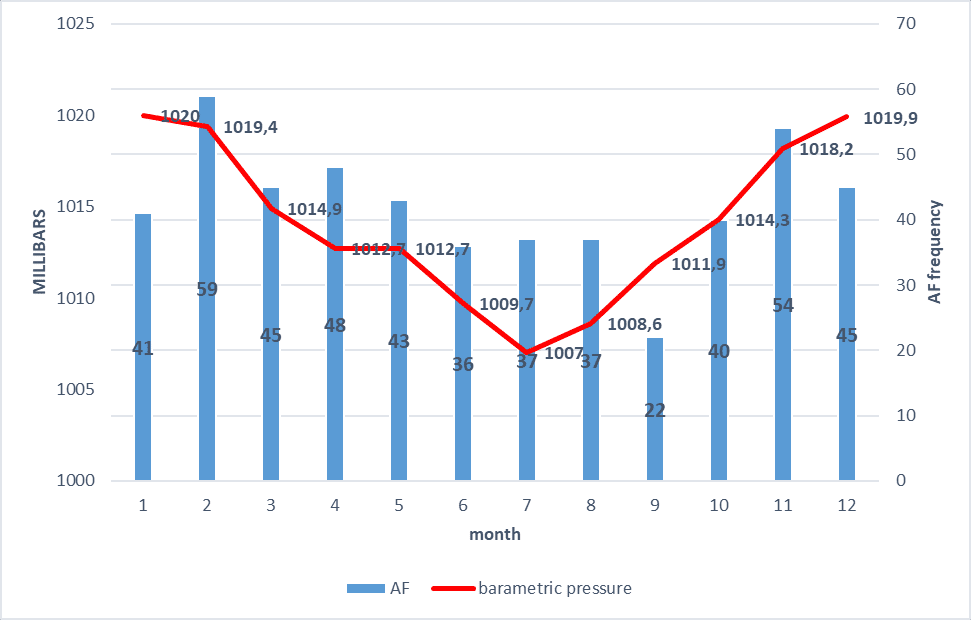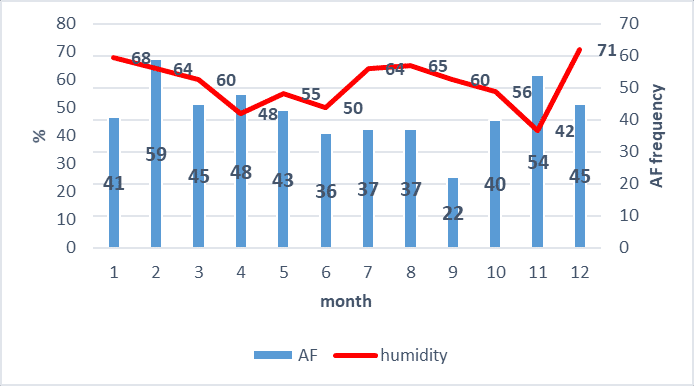
Seasonal Variation in Emergency Room Admission for Acute Onset Atrial Fibrillation
Introduction: Winter season seems to be an evocative trigger for atrial fibrillation (AF) like other cardiovascular pathologies, although data from the literature are often controversial and pointed out variability of the climatic characteristics in different regions.
Limited data exists on seasonal variation of AF episodes in Israel.
We want to investigate meteorological factors contributing to seasonal variation of acute exacerbation of AF diagnosed in patients referred to the Emergency Room of Our Hospital.
Patients and Methods: We consider new onset AF and paroxysm episodes of AF. Patients with more than one episode of AF during the study period are repeatedly entered in the study. Patients with permanent AF, open-heart surgery within 1 month, hyperthyroidism and acute coronary disease, pericarditis, respiratory infection were excluded from the study.
We retrospectively reviewed the hospital database medical data of the consecutive patients admitted in the Emergency Room with symptomatic acute onset AF from 1-1-2016 to 31-12-2016.
We recorded outdoor temperature, barometric pressure, humidity and acute onset AF admission in the Emergency Room.
The mean monthly air temperature, humidity and barometric pressure were obtained from World Weather online.
Results: During the study period 507 episodes of AF were recorded.
The monthly number of AF episodes referred in the ER according to outdoor temperature, humidity, barometric pressure, were reported in figure 1, 2 and 3 respectively.
Fig 1. AF episodes and outdoor temperature (C⁰ )

Fig 2. AF episodes and barometric pressure (mb)

Fig 3. AF episodes and humidity (%)

Conclusion: There is an inverse correlation between atrial fibrillation episodes and outdoor temperature, direct correlation with barometric pressure and no correlation with humidity.

Powered by Eventact EMS